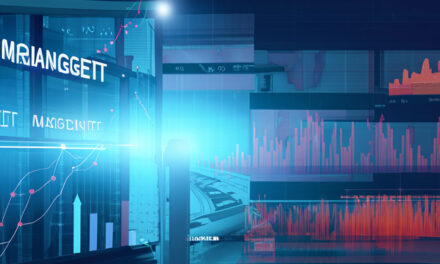Are you a newcomer to the expansive world of forex trading, or perhaps an established trader looking to fine-tune your strategies? Either way, understanding technical analysis in forex trading is a must. This blog post introduces the fundamentals of technical analysis and underscores its importance in formulating successful forex trading strategies.
Forex, short for foreign exchange, denotes the market where global currencies are traded. It’s a vibrant, ever-changing environment that requires both skill and knowledge for fruitful trading.
What is Technical Analysis in Forex Trading?
Technical analysis is a trading discipline employed to evaluate investments and identify trading opportunities. It is grounded in the theory that past trading activity and price changes can forecast future price movements. While this may sound simple, technical analysis in forex trading involves an intricate understanding of various chart patterns, trading volume analysis, and several other elements.
Key Elements of Technical Analysis
The primary tools in a technical trader’s kit are charts and technical indicators. These tools assist in tracking and predicting market movements based on historical data.
-
Charts: These represent historical data and can help traders recognize patterns and trends over a given period. Common types of forex charts include line charts, bar charts, and the most popular, candlestick charts.
-
Technical Indicators: These are mathematical calculations based on a currency pair’s price and volume. Some common technical indicators used in forex trading include Moving Averages, Relative Strength Index (RSI), and Bollinger Bands.
Importance of Technical Analysis in Forex Trading
Technical analysis in forex trading is indispensable for various reasons:
-
Market Predictability: By studying patterns and trends, traders can forecast potential market movements and make informed decisions.
-
Risk Management: Understanding the likely trends can help in setting stop-loss orders and protecting traders from significant losses.
-
Profitable Opportunities: Technical analysis helps identify potential buying and selling points.
-
Independence: The technical analysis gives traders an independent view of the market without relying on market pundits or analysts.
Strategies for Successful Technical Analysis
A successful technical analysis approach is underpinned by a clear understanding of a few crucial elements:
-
Trend Identification: Traders must identify whether the market is trending upwards (bullish), downwards (bearish), or moving sideways.
-
Support and Resistance: These levels refer to the price points on a chart beyond which it’s unlikely to rise (resistance) or fall (support).
-
Volume Analysis: It helps in confirming the strength of a trend. A higher trading volume indicates a robust trend, while a lower volume could signal a weak trend.
Enhancing Forex Trading with Technical Analysis
Despite its complexity, the benefits of technical analysis in forex trading are worth the effort. Traders who can interpret charts and indicators to identify patterns can significantly enhance their trading strategies.
However, it’s important to remember that technical analysis does not provide a 100% accurate forecast of future price movements. It is merely a tool that can help traders make more informed decisions based on the historical performance of currency pairs.
In essence, the importance of technical analysis in forex trading cannot be understated. It’s not a crystal ball but a robust framework for understanding market behavior and making calculated trading decisions.
Remember, forex trading isn’t about always being right; it’s about being profitable more often than not. That’s where technical analysis can be your trusted ally.
Delving Deeper: Types of Forex Charts
To achieve success in forex trading, it’s crucial to understand the types of forex charts used in technical analysis.
-
Line Charts: These are the simplest type of chart, plotting the closing prices of a currency pair over a specific period. Line charts provide a clear visual of the pair’s general price movement.
-
Bar Charts: A bit more detailed, bar charts include opening, closing, high, and low prices for each period. The top of the vertical bar represents the highest price, the bottom is the lowest price, while the horizontal lines on either side represent the opening and closing prices.
-
Candlestick Charts: These are the most popular and offer the same information as a bar chart, but in a more visually appealing manner. Each “candlestick” represents the opening, closing, high, and low prices for each period.
Popular Technical Indicators in Forex Trading
Technical indicators are crucial tools used by forex traders to predict future price movements. Here are a few commonly used ones:
-
Moving Averages (MA): This is a trend-following or lagging indicator because it is based on past prices. MAs smooth out price data to form a trend following indicator and are used to identify price trends in a specific direction.
-
Relative Strength Index (RSI): This is a momentum oscillator that measures the speed and change of price movements. It can help traders identify overbought or oversold conditions, signaling potential reversals.
-
Bollinger Bands: This tool uses a moving average with two trading bands above and below it. The outer bands are typically 2 standard deviations away. Bollinger Bands can be used to identify overbought or oversold conditions and volatility.
The Limitations of Technical Analysis in Forex Trading
While technical analysis is a powerful tool, it’s essential to acknowledge its limitations.
-
Dependent on Historical Data: Technical analysis assumes that history tends to repeat itself. However, this is not always the case, especially during unprecedented economic events.
-
Self-Fulfilling Prophecy: If many traders are using the same technical indicators and interpreting them similarly, this could lead to a self-fulfilling prophecy effect where the price moves in the expected direction because so many people act on the same prediction.
-
Inability to Predict the Future: As mentioned earlier, technical analysis cannot predict future price movements with absolute certainty. It merely provides an indication of possible scenarios.
Combining Technical Analysis with Fundamental Analysis
To enhance your forex trading strategies further, consider combining technical analysis with fundamental analysis. Fundamental analysis involves examining economic indicators like interest rates, employment data, and GDP to predict price movements. When used together, these two forms of analysis can provide a more comprehensive picture of market behavior.
Final Thoughts
In the dynamic and exciting world of forex trading, understanding the principles of technical analysis can significantly improve your trading performance. It provides critical insights into market trends, potential trading opportunities, risk management, and even into the psyche of the market.
While technical analysis has its limitations, its benefits are manifold. It’s not a crystal ball, but it does offer a robust framework for understanding market behavior and making calculated trading decisions.
It’s also important to remember that successful trading isn’t about always being right; it’s about being profitable more often than not. For this, incorporating other types of analysis, such as fundamental analysis, can provide a more holistic view of the market.
The ultimate goal is to equip yourself with the right tools and knowledge to make informed trading decisions. In this context, technical analysis is an indispensable tool. Make it your trusted companion, and you’ll navigate the trading waters with increased confidence and finesse.
In conclusion, technical analysis is a potent part of any successful trader’s arsenal. And as the old saying goes, in the world of forex trading, the well-prepared trader is indeed the successful trader.
Happy trading!






